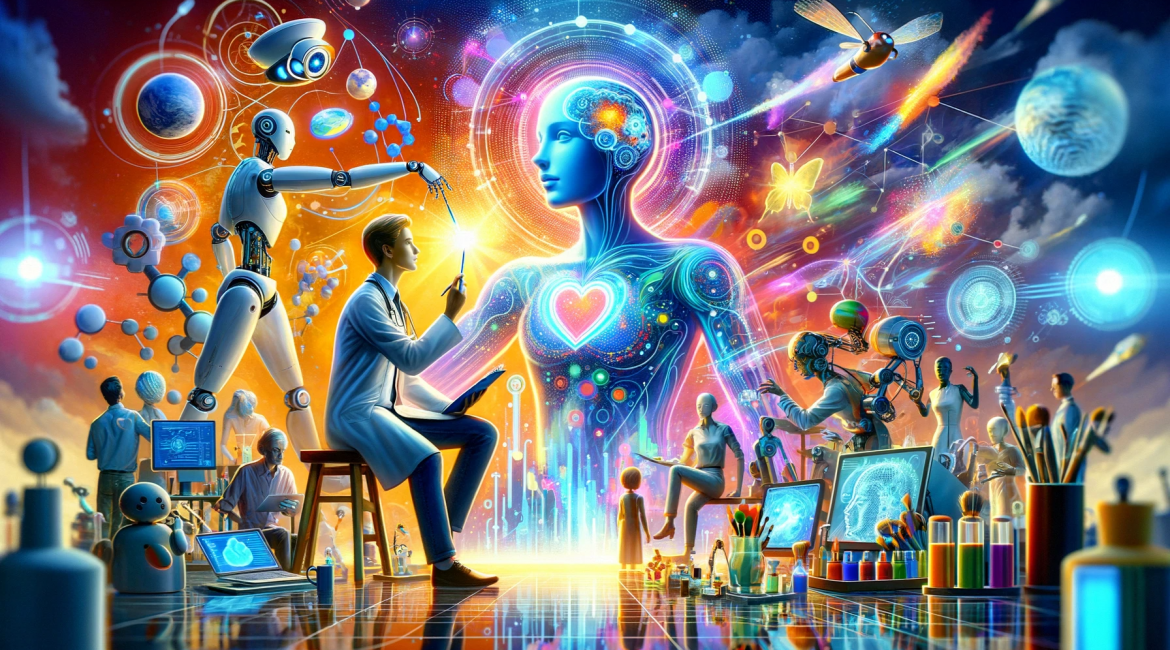For decades, the specter of artificial intelligence (AI) replacing human workers has haunted our collective imagination. Images of assembly lines devoid of human hands, replaced by sleek robots churning out products, dominated science fiction and dystopian narratives. But what if these visions are not our inevitable future? What if, instead of fearing AI as a rival, we could embrace it as a powerful partner, one that unlocks new possibilities and redefines the very meaning of work in the 21st century?
This is not a naive call for blind optimism. We must acknowledge the anxieties surrounding AI’s potential impact on jobs and livelihoods. Automation will undoubtedly transform certain industries, and some skills will become obsolete. Yet, focusing solely on displacement paints an incomplete picture. The truth is, AI presents far more opportunities than threats, and the key lies in understanding how we can harness its potential for the benefit of all.
Imagine a future where:
- AI augments human capabilities: Doctors utilize AI-powered diagnostics to detect diseases with greater accuracy, freeing up their time for personalized patient care. Lawyers leverage advanced legal research tools to build airtight cases, making justice more accessible. Teachers personalize learning plans with the help of AI algorithms, ensuring every student thrives at their own pace.
- New frontiers of creativity emerge: Artists collaborate with AI to co-create stunning visuals, musicians generate novel sonic landscapes, and writers craft stories beyond the limitations of human imagination. AI becomes a tool for amplifying human expression and pushing the boundaries of artistic endeavors.
- Tasks become more fulfilling: Repetitive and mundane jobs are delegated to AI, freeing human workers to focus on tasks that require empathy, critical thinking, and emotional intelligence. We can spend more time on strategy, innovation, problem-solving, and interpersonal connection, enriching our work experience and finding greater meaning in our professional lives.
- A fairer and more equitable future unfolds: AI can be used to tackle challenges like global poverty, climate change, and healthcare disparities. By analyzing vast datasets and identifying patterns, AI can guide the development of sustainable solutions and ensure equitable access to resources and opportunities.
But embracing AI as a partner requires more than just technological advancements. We must prepare ourselves and future generations for this seismic shift by:
- Investing in lifelong learning: Continuous skilling and reskilling will be crucial for adapting to the evolving needs of the AI-powered workforce. Education systems must be overhauled to emphasize critical thinking, creativity, and collaboration skills, alongside knowledge of AI and data analysis.
- Fostering a culture of human-AI collaboration: We must shift the mindset from competition to partnership. Building trust and understanding between humans and AI is essential for creating a workplace where both thrive. This involves clear communication channels, ethical AI development practices, and ongoing dialogue about the role of AI in work.
- Ensuring responsible AI development: Ethical considerations must be embedded in the very fabric of AI design and deployment. We need robust safeguards against bias, discrimination, and privacy violations, ensuring that AI is used for good and benefits all members of society.
The future of work is not preordained. It is a canvas we paint together, stroke by careful stroke. By embracing AI as a partner, not a rival, investing in skills development, fostering collaboration, and prioritizing ethical development, we can create a future where AI complements and augments human capabilities, unlocking a new era of productivity, creativity, and shared prosperity. Let us rewrite the narrative of AI, not as a dystopian takeover, but as a collaborative journey towards a brighter, more fulfilling future for all.




